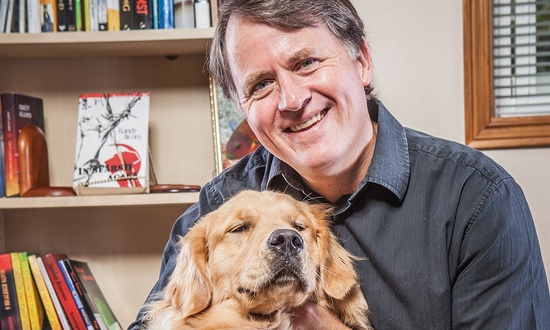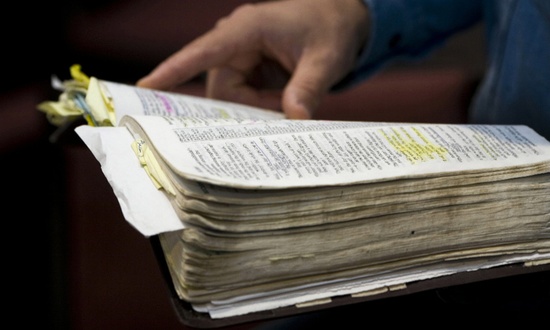 I wanted to share some questions I recently answered about writing Courageous.
I wanted to share some questions I recently answered about writing Courageous.
In adapting a screenplay into a novel, what’s the author’s major challenge?
The challenge is to be 100 percent true to the movie and yet still develop a compelling part of a larger storyline that’s not in the movie. Certain things I wrote into the Courageous novel were hinted at or touched on in the film, and I expanded on them. Some components of the book are entirely new, but I think the movie-goers will really enjoy them.
How does that work out in practice?
Readers will find that the novel is faithful to the movie but covers more ground. When we see a movie version of a book we’ve read, we say, “I can’t believe they cut that character and that scene!” But those cuts are necessary because a book always has way too much material for a two-hour movie. In this case, when the movie came first, I sort of reverse-engineered it. I pretended the movie was based on a novel, and I asked myself, “What would that novel have looked like?” That’s the novel I tried to write. Of course, every novelist would write it differently, but since they asked me to do it, they got my particular style.
So Courageous: The Novel gives readers the movie and more?
Yes, it does. The screenplay had about 20,000 words. That’s only the length of a long “short story.” A typical novel has 80,000 to 100,000 words. This one’s about 85,000. That means I had to create over four times the material already in the movie. I added four times the scenes, four times the plot components, four times more character development, four times more conflict, four times more humor. Movies and novels can be complementary, but because of their forms and lengths they are very different.
Does an example come to mind?
Without some new characters, and a greater variety of characters, you can’t sustain reader interest in a screenplay that you expand into a novel length story. For instance, I added to the novelization a macho cop, raw and sarcastic, a non-believer suspicious of Christians. It’s another point of connection for readers, particularly non-believers, and certainly cops, who know more than one of these guys. And when this character, Bronson, is touched by something that happens, then you really see God at work precisely because it’s not predictable.
Did you expand on items in the movie as well?
 Absolutely. It gives away nothing to say Courageous deals in part with the effects of fatherless homes and with the gang culture. In the movie you see gang members, but not many depictions of gang life. Again, movie time is limited. In the novel I delve much deeper into describing gang life, with no sexual references and obscene language, and with only a small amount of drugs and a moderate amount of violence, just enough to make it real. By getting inside the gang, I show the poor substitute it is for having a father. By demonstrating that gangs are a dead end street, that drugs don’t help people but ruin them, the novel will hopefully send a wake-up call to parents and their teenagers, prompting them to have conversations about choosing their friends wisely and staying away from drugs.
Absolutely. It gives away nothing to say Courageous deals in part with the effects of fatherless homes and with the gang culture. In the movie you see gang members, but not many depictions of gang life. Again, movie time is limited. In the novel I delve much deeper into describing gang life, with no sexual references and obscene language, and with only a small amount of drugs and a moderate amount of violence, just enough to make it real. By getting inside the gang, I show the poor substitute it is for having a father. By demonstrating that gangs are a dead end street, that drugs don’t help people but ruin them, the novel will hopefully send a wake-up call to parents and their teenagers, prompting them to have conversations about choosing their friends wisely and staying away from drugs.
Is the same true about the main characters?
The movie shows tension between Adam and Victoria—the look on her face and her comment that Adam needs to spend more time with his son. She sees some downsides to Adam’s parenting that he misses. In the book I could develop more fully that tension, and take the reader more deeply into all of the Mitchell family, show Dylan’s resentment and personal struggles, and yet stay true to the story in the film. Just because something is in the book that wasn’t in the movie doesn’t mean the book is contradicting the movie. On the contrary, it can simply be enhancing it, expanding it and deepening it.
What type of preparation does adapting a book like this require?
I spent four days in Albany, Ga. [home of Sherwood Baptist Church, Sherwood Pictures, and the Courageous movie production], meeting extensively with not only Alex and Stephen Kendrick, but with a variety of people, including Ken Bevel, who played Michael in Fireproof and plays Nathan in Courageous. I was driven around town for three hours by a savvy cop, a veteran investigations Captain who showed me the gang life where drug deals happen, and took me on a tour of the jail. I took photographs and visited most of the film’s locations. I even worshipped at Sherwood Baptist on Sunday, which I really enjoyed (a key scene in the movie and the book takes place there). So when I wrote a scene, I’d been there. Authenticity is important. If it’s true in the writer’s mind the reader picks that up, if it’s vague to the author, the reader senses that and doesn’t buy into the story.
Do you find that some Christian readers are suspicious of fiction?
Many think of non-fiction as truth, and fiction as falsehood. But most people understand that if I write a story and the reader knows it’s a story, obviously that’s not deception! Jesus’ parables were stories used to bring out truth. Fiction has the ring of truth, by getting the details right. And a well-told story brings truths to light in the reader’s mind that wouldn’t have surfaced from most non-fiction books. (And by the way, just as there is a great deal of truth in fiction, there is a great deal of falsehood in some nonfiction!).




